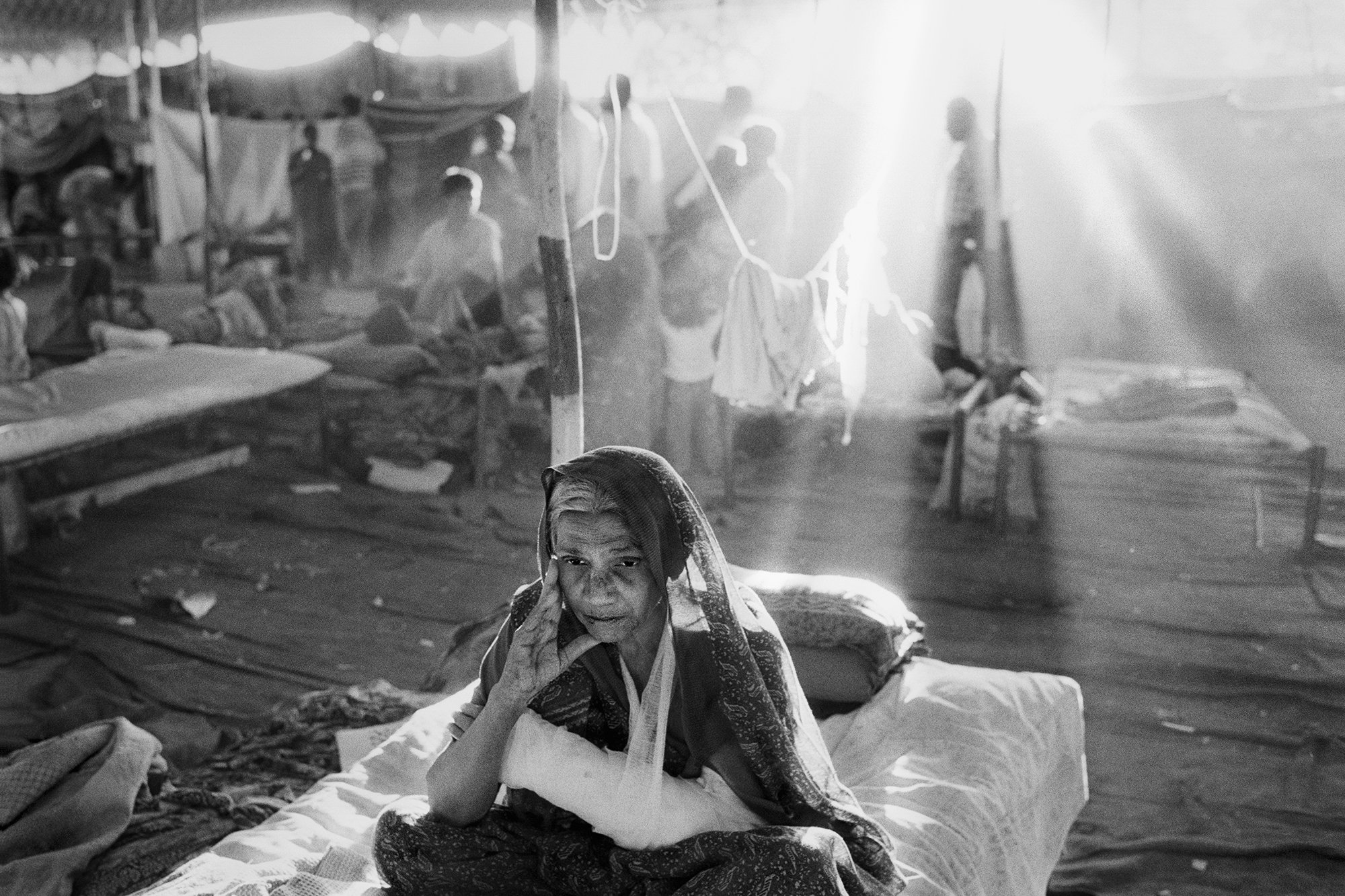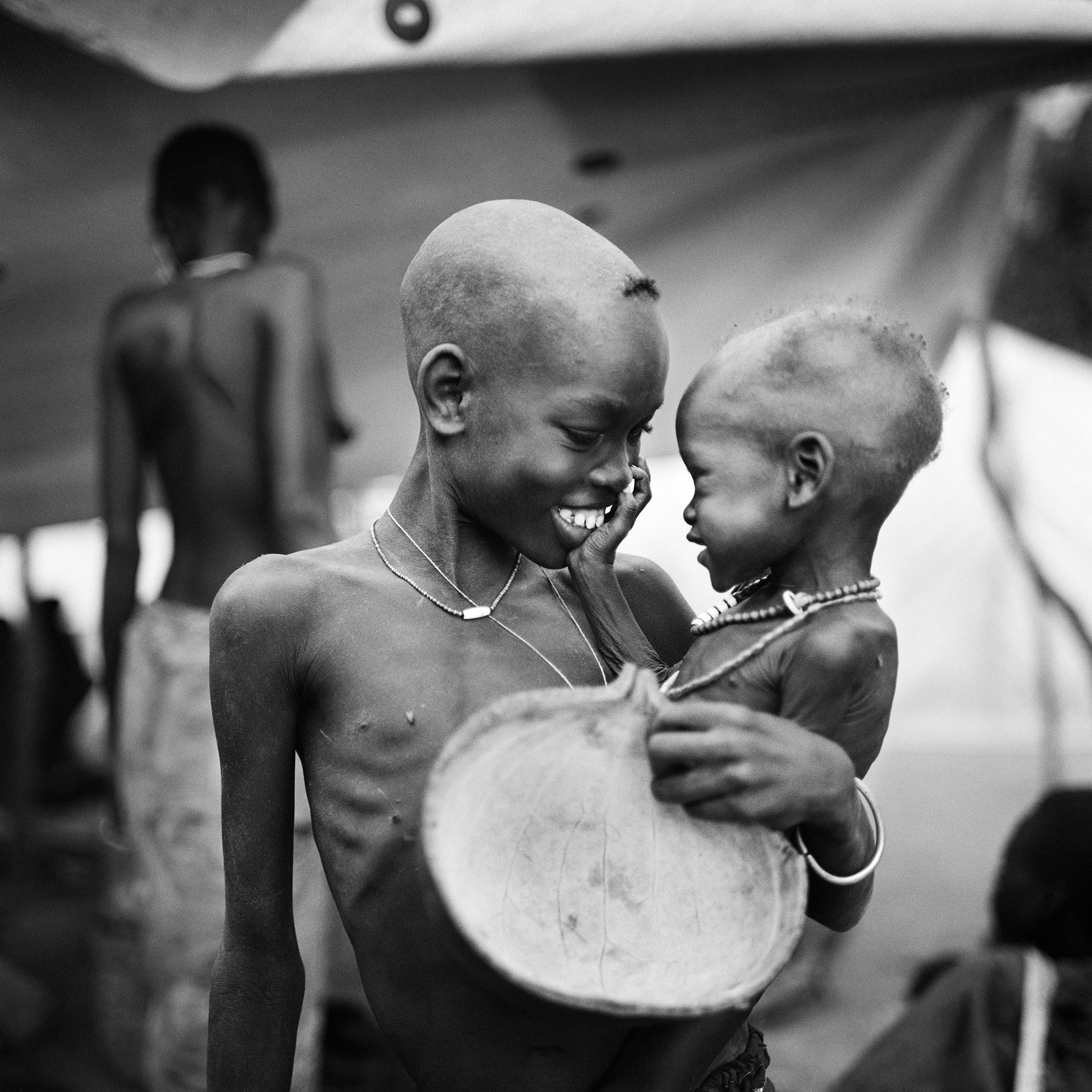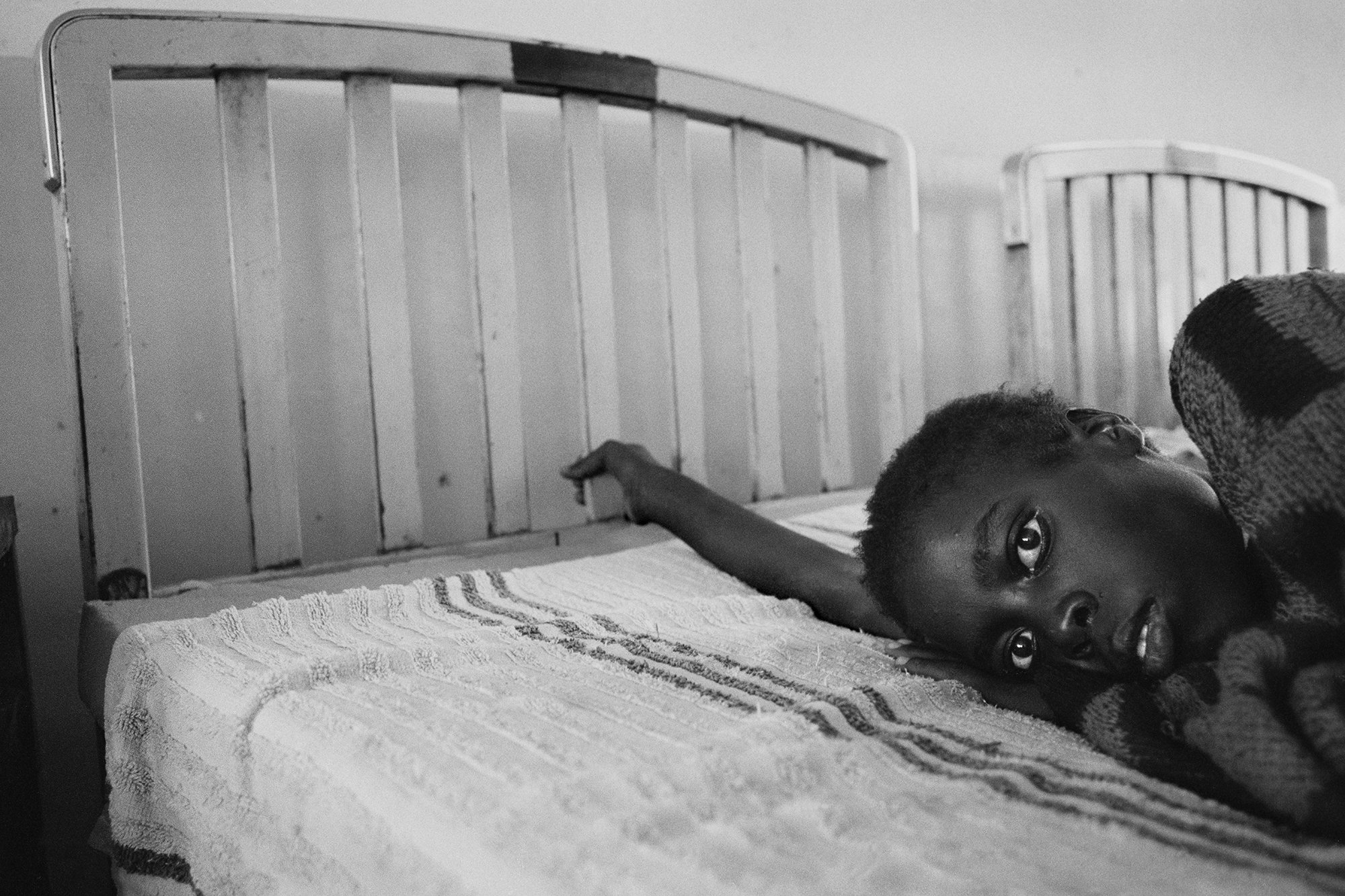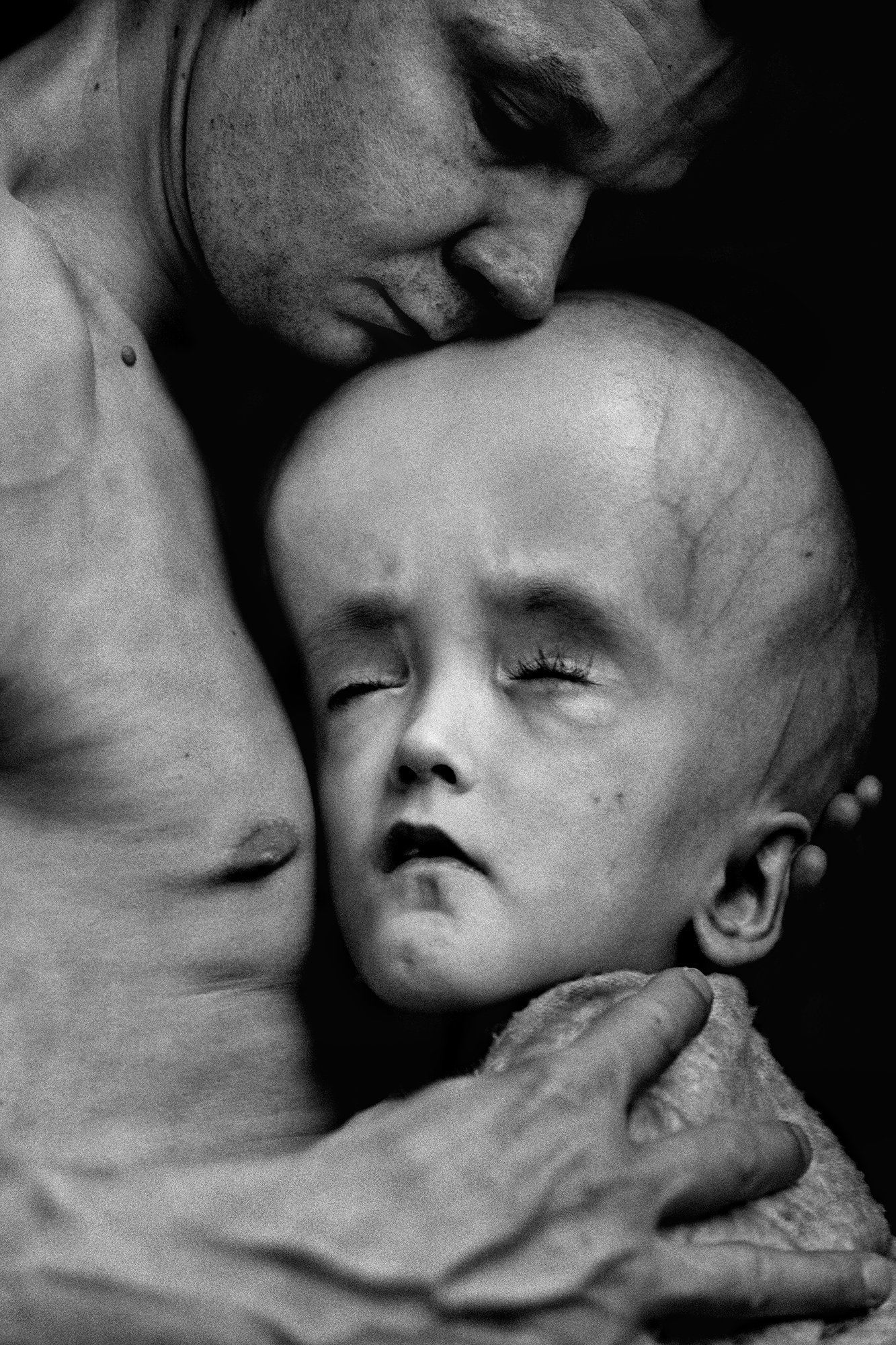
Lest we forget - Africa’s Aids Crisis, 2003
By the time you finish looking at these photographs another 600 people will have been infected with HIV in countries around the world. Since it was first reported 20 years ago, 60 million have been infected and 20 million have died of AIDS.
It is an international crisis, but in sub-Saharan Africa AIDS is inflicting a catastrophe of epic proportions on an already poverty stricken and weak population. The disease is killing 7000 Africans every day leaving millions of children orphaned and a region with a life expectancy likely to fall to only 38 years by 2010. This year the ‘Dark Continent’ will suffer 5 million new infections compared with only 40,000 in North America. A teenage son in South Africa has a 50/50 chance of dying of AIDS – in Botswana it would be a 66% chance.
Joseph Stalin said “One death is a tragedy, a million deaths is a statistic”. Behind the African AIDS statistics lie millions of deaths, each one a tragedy for a family or a child.
Living in these countries, there is no escape from HIV/AIDS, you are either ‘infected or affected’ by the deadly killer. Every day innocent faces stare out of obituary columns in hundreds of newspapers across the continent. ‘In Loving Memory’ of …Simon, Winnie, Joseph, Victoria, Clemensiah, Wilfred. A lost generation of Africans who have barely begun their lives. It is little wonder that Nelson Mandela said recently “This is a serious and urgent problem, without children there can be no nation, there can be no future leaders of our countries”
For two years I have been photographing the human cost of AIDS in southern Africa. During trips to Kenya, Zambia, Malawi, South Africa, Tanzania and Zimbabwe I have witnessed and recorded the daily life of people dying, and living, with the disease.
My hope is that these images will remind we who live in the west with the privileges of clean water, shelter, food, and access to modern health care, that Africans need our help and understanding, not our sympathy or pity.
The courage, dignity, and humour of the people photographed during this project, is best summed up by a sign, that was hanging near the bed of a man dying from AIDS in Zambia. It said “I was born with nothing, so even if I die with nothing I have lost nothing, but I have enjoyed the journey”
Tom Stoddart, 2003.
Out of the Darkness, 2013
During the late 1990’s and early years of the new millennium, I traveled extensively in Sub-Saharan Africa documenting the catastrophic AIDS crisis blighting the region. The resultant photo-essay was entitled ‘Lest We Forget: AIDS In Africa’ and in 2003 it was honoured with first place in the Pictures Of The Year World Understanding Award.
For almost 30years HIV/AIDS has cast a long shadow across impoverished but beautiful countries like Kenya, Malawi, Zimbabwe, Uganda and Tanzania. The figures are truly frightening, with one in five adults across these populations affected by the disease. Yet our obsession with statistics numbs our appreciation of the scale of human suffering, and the enormous courage of those touched by this scourge.
Graphs cannot measure the remarkable efforts of health workers, or the strength of Africa's orphaned children, left to bring up younger brothers and sisters.
In schools, villages and clinics across Sub-Saharan Africa, tireless volunteers struggled to teach those infected with HIV/AIDS how to live with the virus and not die from it.
Meanwhile dedicated staff in hospices made the final hours of those beyond help, as
painless and dignified as possible. One such place was the Mother of Mercy Hospice at Chilanga, south of Lusaka in Zambia.
On half a dozen visits I photographed the amazing Sister Leonia Kornas and her small team of mainly volunteer staff fighting to provide practical and emotional care for the poorest and weakest people in the area. They were dark days illustrated by one huge cemetery where 126 gravediggers hacked away at the baked earth, and a permanent fog of dust swirled around the funeral processions that arrived every few minutes, with coffins strapped to car roof racks or carried on trucks.
When the Bill and Melinda Gates Foundation asked me to return to work at Mother of Mercy Hospice, I was delighted. Fighting HIV/AIDS is one of the Foundation’s main priorities and they have committed more than $2.5 billion in grants to organisations battling the disease.
Sister Jeremiah Mrowiec has been promoted and is now in charge of the hospice. On the first day it was obvious a huge change had taken place as I photographed dozens of people receiving free antiretroviral drugs at the ART clinic opened in 2008. Every month hundreds of TB and HIV/AIDS patients attend the clinic and the mortality rate has dropped dramatically.
Out in the surrounding poor communities served by the hospice, where previously I photographed desperately sick and weak people, those with HIV/AIDS now take a daily dose of ARV drugs and are able to work, play with their children and lead normal lives.
The battle to defeat HIV/AIDS is very far from over, but rays of hope are beginning to appear.
Tom Stoddart, 2013.
A rare moment of joy between siblings at Ajiep, in Bahr El Ghazal Province , South Sudan during the devastating famine of 1998.
AIDS sufferers Loveness Zumara and Laureen Ioga in the chapel of the Mashambanzou Care Trust, Harare, Zimbabwe 2000.
A girl weakened by AIDS, hangs onto life in a ward at the Homa Bay Hospital, near the shores of Lake Victoria in Kenya 2001.
At The Mother of Mercy Hospice in Chilanga, Zambia, a nurse gently leads AIDS sufferer Josephine Mudenda to her bed, Zambia 2002.
Masaai AIDS campaigner Joan Koisianga demonstrates how to put on a condom to the pupils of Likidinga Secondary School near Arusha, Tanzania 2002.
A Masaai woman living with AIDS not giving up hope as better medicines make life a little easier. Kenya 2001.
A Masaai man living with AIDS stands proud at his home in Kenya 2001.
Olivia Willard gives birth to baby Mercy in Simika village, Malawi. The young mother is being helped by a traditional birth attendant who has been trained and equipped by Medecins Sans Frontieres 2000.
In a Malawi village, a travelling theatre group perform a play warning about the danger of having sex without a condom. 2000.
Relatives prepare the body of a man who died of AIDS for burial in Zambia. 2000.
An all too familiar street scene in Malawi as a child passes coffins in the village of Njuli during 2000.
The family of Beauty Makwete mourn her death from AIDS during her funeral at Mapepe Cemetery, near Lusaka, Zambia 2002.
A new life begins as another ends in the Ajiep feeding centre, southern Sudan, during the 1998 famine.
An injured elderly woman sits quietly on her bed in an emergency hospital set up by aid agencies in Anjar, India, after an earthquake struck at 8.46am on 26th January, 2001
Girls suffering from Sleeping Sickness receive treatment at a Medicens Sans Frontieres clinic in Omugo, northern Uganda. River Blindness is being prevented by the charity Sight Savers, who for as little as 50 cents, can provide Mectizan tablets to people at high risk. 1997.
A portrait of a woman suffering from River Blindness in West Africa. River Blindness is the fourth most common cause of blindness in the world. Seventeen million Africans are infected with the disease which is caused by a worm found in fast flowing rivers. Children as young as two can be seen leading blind family members through the countryside at the end of a stick. 1997.
An elderly woman suffering from River Blindness being helped by her daughter at their village in west Africa. 1997.
Patients waiting for cataract surgery on their eyes at a clinic in Madurai, southern India. There are more than 9 million people suffering from blindness in India, most through cataracts caused by vitamin A deficiency or glaucoma. 1999.
Guided by his by his granddaughter a man affected by river blindness casts his net to catch fish to feed his family. West Africa 1997.
In West Africa the populations of entire villages can be affected by River Blindnesss. The condition is the fourth most common cause of blindness in the world. 1997.
A woman sits in the sunshine after her cataract operation in a hospital in southern India.The British charity Sight Savers prevents and cures blindness in over 20 developing countries by screening partially sighted and blind people, and then supporting surgical clinics where cataract patients can be operated on for as little as $20 which changes their lives. Madurai, India 1999.
Armnaumma Haniffa who escaped the tsunami by clinging onto a fan for two hours after the water pushed her up to the ceiling in her front room recovers in a refugee camp in the Kalmunai district of Sri Lanka 2004.
Children listen intently to their teacher during lessons in a Mali school, 1997.
A girl is tested for Sleeping Sickness at an Medicens Sans Frontieres clinic in Omugo, Uganda. The disease infects up to 500,000 people and threatens 60 million more, predominantly in sub-Saharan Africa. The drugs available to treat sleeping sickness are archaic, toxic, or difficult to administer. 2000.
Vitali Prokopenko with his daughter, Sasha who has hydrocephalus - fluid on the brain. Vitali believes Sasha's condition is the result of living in Gomel, Belarus, a region contaminated by the Chernobyl nuclear explosian. He says, "This must be very difficult for you. You have probably never seen anyone with such a big head, but to us she is our most beautiful daughter." Gomel, Belarus 2006.
A carer from an orphanage holding a malnourished and AIDS stricken girl shortly after Romanian dictator Nicolae Ceausescu was overthrown in December, 1989. The world was exposed for the first time to the shocking images of Romania's orphans, especially its handicapped children and babies with AIDS and those living with hepatitis and TB. Bucharest, Romania 1990.
























